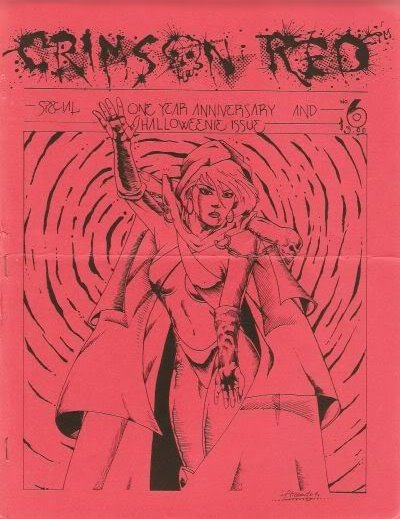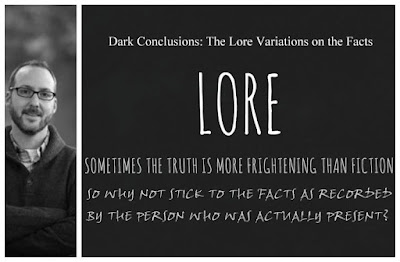(Click to view the entire programme.)
Forbidden History, now in its third series on the "Yesterday" channel, is one of those programmes that chooses sensationalist subjects but after viewing frequently leaves its audience with a feeling of disappointment. The programme about vampires, transmitted last Friday, had all the ingredients of a topic that would hold the viewer's attention. Inevitably and inexorably, by the time it reached its climax with the Highgate case at the top of the vampire menu, disappointment was all they could evoke. Seán Manchester wrote to the series director and producer. It is now understood that Forbidden History accepts that a mistake was made on their part, and they have agreed to pay an appropriate compensatory sum to Seán Manchester for illicitly using his image in their programme.
Seán Manchester wrote:
Re: http://uktvplay.uktv.co.uk/shows/forbidden-history/watch-online/?video=4790321875001
Forty-one minutes into the programme, a black and white photograph of me appears for seven seconds.
I am the lawful and exclusive copyright owner of that image which shows me standing by the North Gate in Swains Lane, Highgate.
To add insult to injury, my image has been used in the programme to support the words of a charlatan who has shamelessly exploited my work for his own self-serving ends and voracious appetite for publicity for over four decades.
The photograph has been filched from somewhere I have had it legitimately published. If you intended to airbrush the author of The Highgate Vampire from your coverage of the case you should not have included this photograph.
When Andrew Gough, a personal friend of Farrant for some years, first approached me about this programme last year he assured me that "David [Farrant] would not be interviewed." (See below).
Having been a contributor to television for almost half a century, I naturally take nothing I am told at face value. I feel that my persona has been seriously abused by linking me to anything this Farrant character claims.
Most in the section on Highgate is misleading and factually inaccurate. There is enough evidence on public record, however, to have avoided this occurring, even if you expurgated, as you clearly did, all reference to those who actually investigated the case.
Sincerely,
†Seán Manchester
Seán Manchester had fittingly and somewhat ironically written on his website on 13 December 2013:
"I quickly came to realise many years ago that interviewers, regardless of the subject, simply do not know the right questions and the questions are every bit as important as the answers. Another problem in the new century has been one of trust. Seldom have I encountered an interviewer in recent years who keeps his or her word. Consequently, any condition I might have set for providing a contribution was frequently and almost immediately compromised. Without trust and a sense of honour there is nothing. I cannot interact in that way and would rather stay silent than witness yet another agreement broken. I am still having to regularly turn down television and radio interview requests, along with a plethora of other invitations to partake in projects that would maintain a perception of me remaining a public figure."
Despite Andrew Gough's assurance to Seán Manchester that "David Farrant would not be interviewed," in actual fact, Farrant was the only contemporary person who was interviewed about the vampiric goings-on at Highgate. Others who offered their opinions throughout the programme, whether about Highgate or not, were hardened sceptics who view everything in purely materialistic terms. They approached the subject of vampires from a scientific point of view. The problem is that the supernatural cannot be approached in that way because it transgresses the laws of science.
Seán Manchester states in his correspondence to the programme's director that "the section on Highgate is misleading and factually inaccurate." Let's examine that section to see what he means.
Thirty-four minutes into the documentary it finally reaches what a lot of people will have been waiting for when they first began watching: the case of the Highgate Vampire. What the viewer ends up with is a young American woman proclaiming that the Highgate story is "the ultimate British B movie" with "someone running around claiming he's chasing vampires." While this is being stated the viewers are shown Roger Simpson's article about David Farrant's penchant for sacrificing cats in Highgate Woods that appeared in the Hornsey Journal, 13 August 1973, which has nothing whatsoever to do with the case of the Highgate Vampire. Forbidden History is careful not to reveal the article's headline: "Cat's throat slit during witchcraft ritual in woods." Cat's throat slit by Farrant according to Farrant himself!

Next, while being shown posed images from TitBits magazine of Farrant prancing about in Highgate Cemetery, we are told "a group of ghost hunters in the 1960s, 1970s were ghost hunting in Highgate Cemetery, and one of them spent the night there and believes he saw a ghost, a figure dressed in a cape wandering through Highgate Cemetery." This is clearly a reference to Farrant who did not describe anything "dressed in a cape" and whose wife at the time, Mary, stated under oath at the Old Bailey during his criminal trials in 1974: "We would go in, frighten ourselves to death and come out again. It was just a silly sort of thing that you do after the pubs shut." Mrs Farrant added that her husband’s friends who joined in the late night jaunts were not involved in witchcraft or the occult.
We are then told about Satanists who broke into Highgate Cemetery, exhumed a corpse and "hammered a metal stake through the coffin lid and through the heart of the person in the grave." None of which happened, needless to say. Yet, as the viewer is told about these Satanists, they are shown simultaneously a 1972 photograph of David Farrant and Victoria Jervis being arrested in Monken Hadley churchyard in High Barnet, which owes no connection to the the Highgate case.
Viewers are at last treated to something that at least vaguely relates to the cemetery vampire case, albeit in a sensationalist article by Barrie Simmons in the Evening News, 16 October 1970, covering the antics of the publicity-seeker where he is portrayed as a rank amateur with a protective cross comprising of two twigs held together by a shoelace, plus a Sainsbury's carrier bag for his stakes.

Presenter Jamie Theakston informs viewers that he has "come to Highgate" to meet David Farrant, but Farrant, who hasn't lived in Highgate for four and a half decades, actually lives in Muswell Hill. Theakston interviews him in his bedsit at the top of a house in Muswell Hill Road. He asks Farrant what it was he saw on that night inside Highgate Cemetery, but Farrant's original letter to the editor of the Hampstead & Highgate Express explicitly states that it was while walking along Swains Lane as he passed the North Gate that he saw something on the other side of the iron railings. A description of something as tall as the iron North Gate is alleged while simultaneously the massive stone arch leading to the Circle of Lebanon, which is at the heart of the graveyard, is shown on screen. While all this is being explained, the above image of Farrant armed with a crude wooden cross and stake emerges on the screen. Farrant has always previously insisted that he doesn't believe in vampires and has never seriously sought them out. This is not a revelation made on Forbidden History!
As a press cutting of the outcome of his criminal trials at the Old Bailey is shown, Theakston asks Farrant why he was arrested and allows Farrant get away with answering: "I was arrested and charged with indecency in a churchyard." True. He was found guilty of indecency in 1972, but the press cutting related to his trials two years later at which he was found guilty of graveyard desecration and tomb vandalism relating to Highgate Cemetery, threatening witnesses with black magic in an attempt to pervert the course of justice in the trial of a self-proclaimed Satanist who was and still remains his colleague, possession of a firearm and ammunition, plus theft from a hospital.
None of which is mentioned or alluded to, apart from one press cutting, throughout the documentary.
At this point, Andrew Gough proclaims that Farrant "headed the British Occult Society and had a really important role in the whole Highgate Vampire story." Nothing could be further from the truth.
"He's the one going into the tombs and uncovering the fact that satanic rituals were going on there."
"He's the one who identifies this entity, as trying to be manifested, and he's the one who kind of goes on this journey to find the vampire."
Or so claims Andrew Gough who is pictured with David Farrant in the latter's Muswell Hill bedsit. The girl at the centre is an acquaintance of Gough's whose curiosity must have got the better of her.
The fact is that Farrant was exposed by the British Occult Society from very early on. He has had no connection with that organisation beyond pretending to be associated to bolster his own publicity-seeking pranks. Newspapers invariably added to any such claim he made the prefix "self-styled."
Far from being the one who uncovered satanic rituals in tombs, Farrant was found guilty by a jury at the Old Bailey in the summer of 1974 of causing the satanic symbols and thereby rituals in tombs.
Gough's claim that Farrant went on a journey to find the vampire is perhaps the most absurd statement of all. Farrant has spent most of his life strenuously denying the existence of vampires and all newspaper reports that briefly in August 1970 he adopted the role of a "vampire hunter."
"Curiously, to this day, there are reports in Swains Lane of civilians reporting to the police of a tall man walking across the street with dark, piercing red eyes; walking across the street and through the wall. This gets reported to the police every two or three years," claims Andrew Gough near the end.
This is untrue, as the police themselves will confirm. There have been no credible witnesses since the 1960s and early 1970s. Recent claimants have turned out to be associates of one man: Farrant.


























